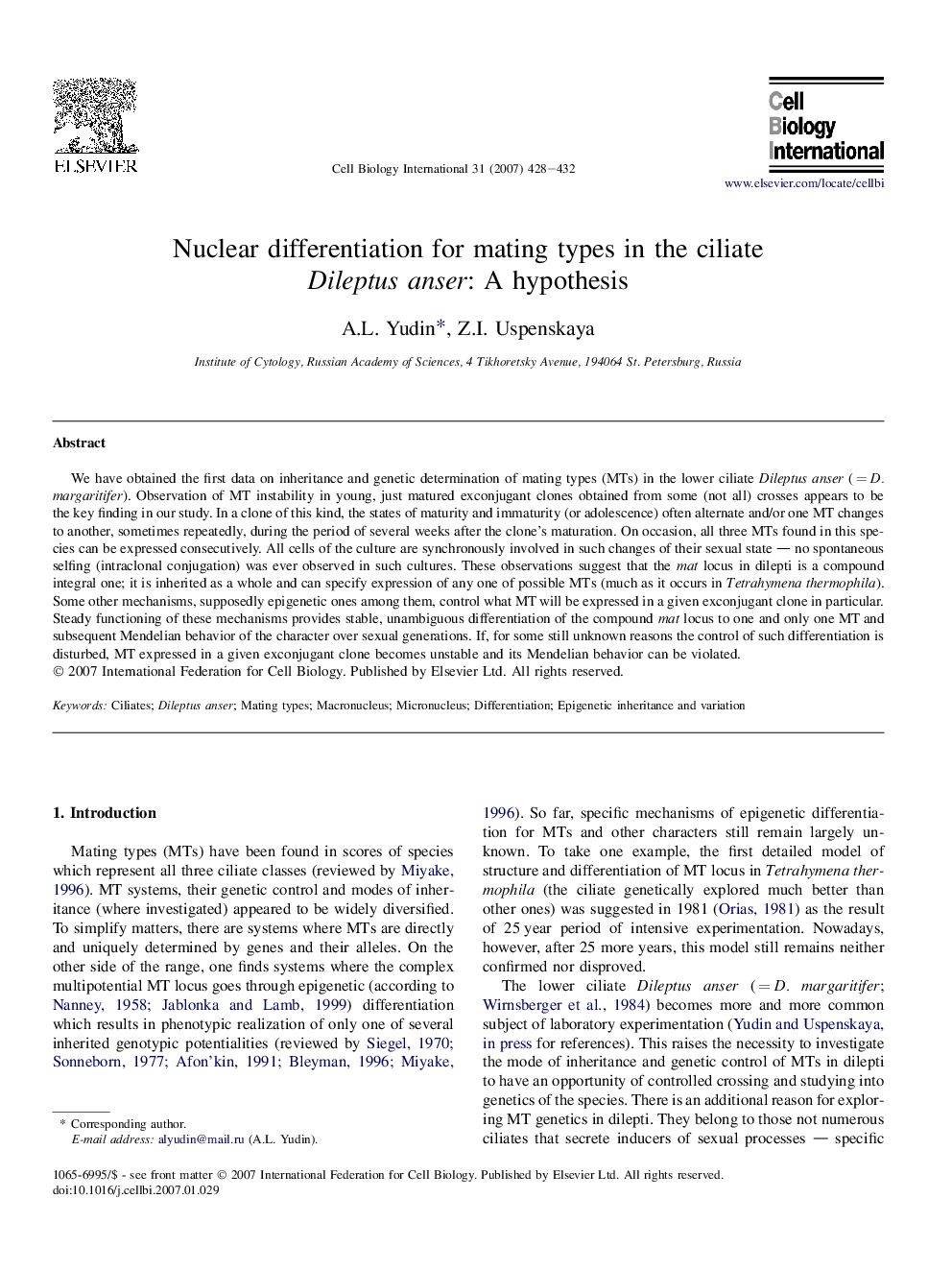| کد مقاله | کد نشریه | سال انتشار | مقاله انگلیسی | نسخه تمام متن |
|---|---|---|---|---|
| 2067680 | 1077904 | 2007 | 5 صفحه PDF | دانلود رایگان |
عنوان انگلیسی مقاله ISI
Nuclear differentiation for mating types in the ciliate Dileptus anser: A hypothesis
دانلود مقاله + سفارش ترجمه
دانلود مقاله ISI انگلیسی
رایگان برای ایرانیان
کلمات کلیدی
موضوعات مرتبط
علوم زیستی و بیوفناوری
بیوشیمی، ژنتیک و زیست شناسی مولکولی
بیوفیزیک
پیش نمایش صفحه اول مقاله

چکیده انگلیسی
We have obtained the first data on inheritance and genetic determination of mating types (MTs) in the lower ciliate Dileptus anser (Â =Â D. margaritifer). Observation of MT instability in young, just matured exconjugant clones obtained from some (not all) crosses appears to be the key finding in our study. In a clone of this kind, the states of maturity and immaturity (or adolescence) often alternate and/or one MT changes to another, sometimes repeatedly, during the period of several weeks after the clone's maturation. On occasion, all three MTs found in this species can be expressed consecutively. All cells of the culture are synchronously involved in such changes of their sexual state - no spontaneous selfing (intraclonal conjugation) was ever observed in such cultures. These observations suggest that the mat locus in dilepti is a compound integral one; it is inherited as a whole and can specify expression of any one of possible MTs (much as it occurs in Tetrahymena thermophila). Some other mechanisms, supposedly epigenetic ones among them, control what MT will be expressed in a given exconjugant clone in particular. Steady functioning of these mechanisms provides stable, unambiguous differentiation of the compound mat locus to one and only one MT and subsequent Mendelian behavior of the character over sexual generations. If, for some still unknown reasons the control of such differentiation is disturbed, MT expressed in a given exconjugant clone becomes unstable and its Mendelian behavior can be violated.
ناشر
Database: Elsevier - ScienceDirect (ساینس دایرکت)
Journal: Cell Biology International - Volume 31, Issue 4, April 2007, Pages 428-432
Journal: Cell Biology International - Volume 31, Issue 4, April 2007, Pages 428-432
نویسندگان
A.L. Yudin, Z.I. Uspenskaya,